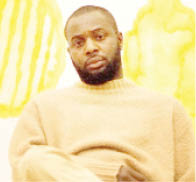Why I address identity using durag – Anthony Akinbola
Anthony Akinbola has said his love for durag was borne out of his passion for the history and utility of the object. In an interview with Artsy Akinbola, a Nigerian American, said, “by wearing the durag there’s an element of people assuming I’m a certain type of Black person based on what they’ve seen in […]

Anthony Akinbola has said his love for durag was borne out of his passion for the history and utility of the object.
In an interview with Artsy Akinbola, a Nigerian American, said, “by wearing the durag there’s an element of people assuming I’m a certain type of Black person based on what they’ve seen in movies or music videos.”
The interdisciplinary artist identifies with Black culture and uses his visual art to focus on access and inclusion by encouraging audiences to recognize our collective similarities regardless of race, gender, or socioeconomic status that all too often sow division in contemporary society.
His well-known and instantly recognizable durag “paintings” reflect on the cultural significance these objects hold while also playing on light and colour theory through abstraction.
“The durag comes in a lot of colours and textures. After I made a couple of works, I became interested in the history and utility of the object. It’s a material I’m familiar with but not everyone that uses a durag knows the history behind it.
“For me, I felt like “camouflage” became an appropriate title for the series because there’s this element of blending in these different ways I was seeing. I’d known that the material obviously was loaded. I think that’s kind of what grounded the work when the question became “why the durags” and “why the titles.”
“I’ve been thinking about representational abstraction in relationship to these paintings. I’m bringing things from the world that exist and I’m presenting them in a way that allows me to work with colour and form, but it’s still rooted in this conceptual, readymade play on pulling value out of objects and giving them a new context to live,” he said in the interview.
